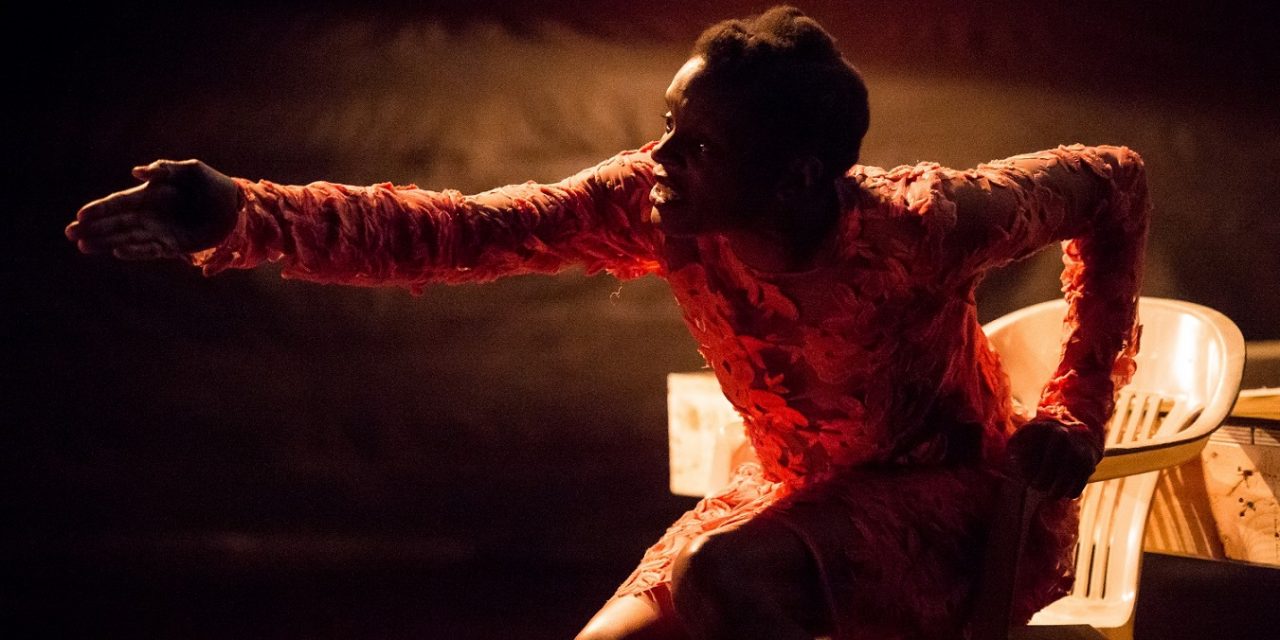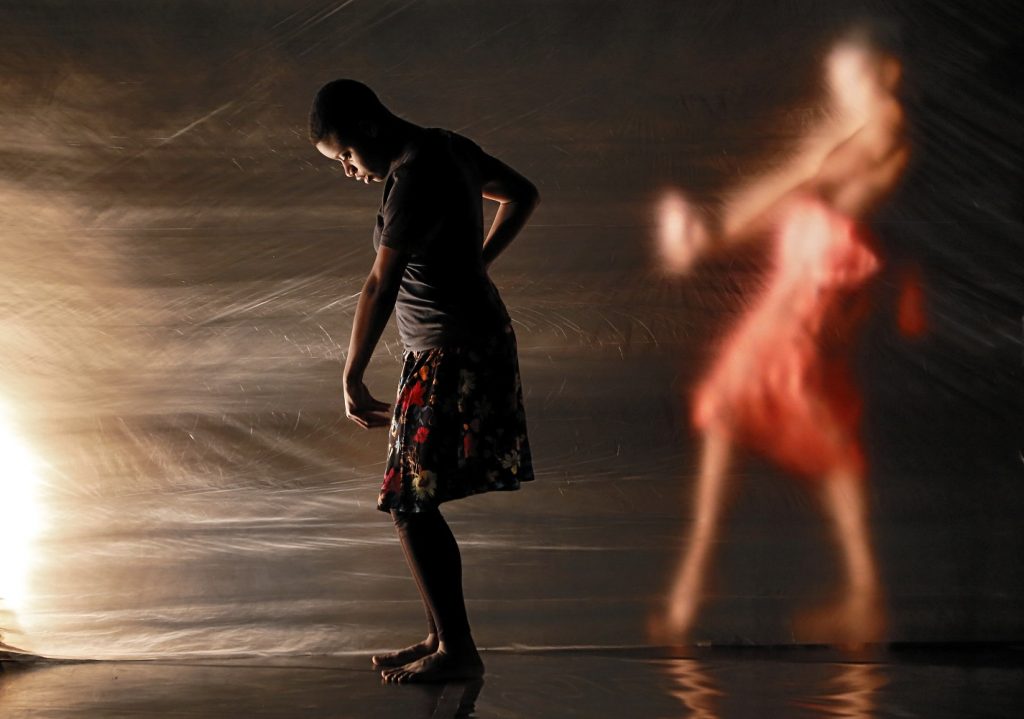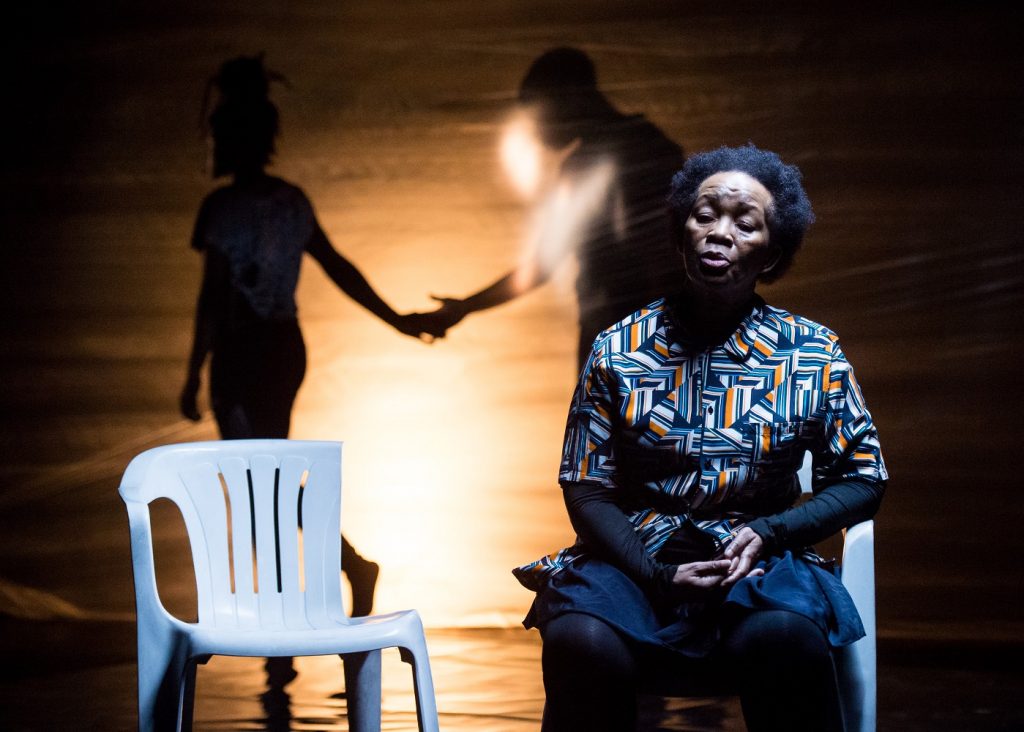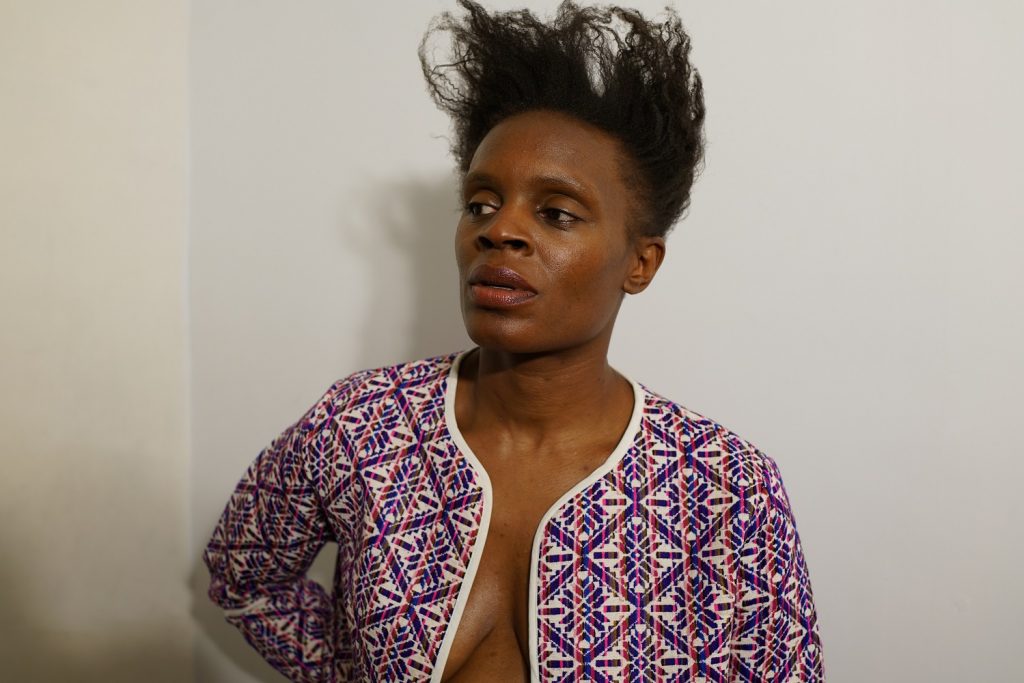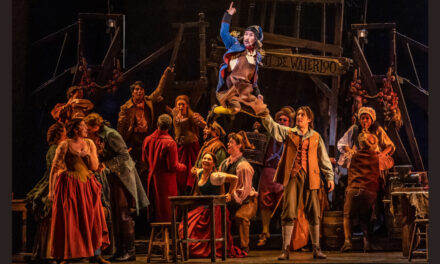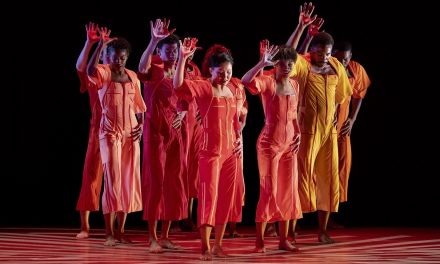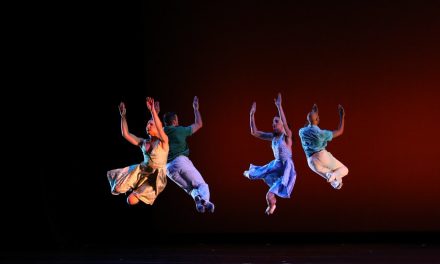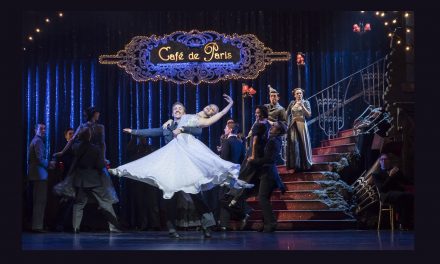Okwui Okpokwasili is a writer, performer and choreographer based in New York and she is the recipient of a 2010 Bessie Award for Outstanding Production for Pent-Up: A Revenge Dance. Her newest work with collaborator Peter Born titled POOR PEOPLE’S TV ROOM, is currently appearing at REDCAT through February 11. The performances given by the cast of four women are intense and powerful. The movement is stark, repetitive and sometimes frantic, and the work is occasionally difficult to absorb because of its severe visual and verbal realities. Peter Born’s set turns life upside down and backwards to create a surrealistic atmosphere, but Okpokwasili’s characters, movement and text strike a very honest cord within ones’ universal knowledge of how women have been and still are treated.
POOR PEOPLE’S TV ROOM was inspired by the 1929 “Women’s War” in Nigeria, a movement that took months for the government to suppress, and one that became known as a “historic example of feminist and anti-colonial protest”. Okpokwasili does not draw a clear connection to the event, but she undoubtedly delivers a strong sense of the pent-up anger and frustration within the four female characters. Okpokwasili uses movement, song, text and video to speak to the global issues of women; tying them together with the TV celebrity, Oprah Winfrey, as a role model and hopeful savior. There are moments when her characters appear to be hallucinating or morphing into mythical beings, but Okpokwasili always brings these women back into an acute sense of reality.
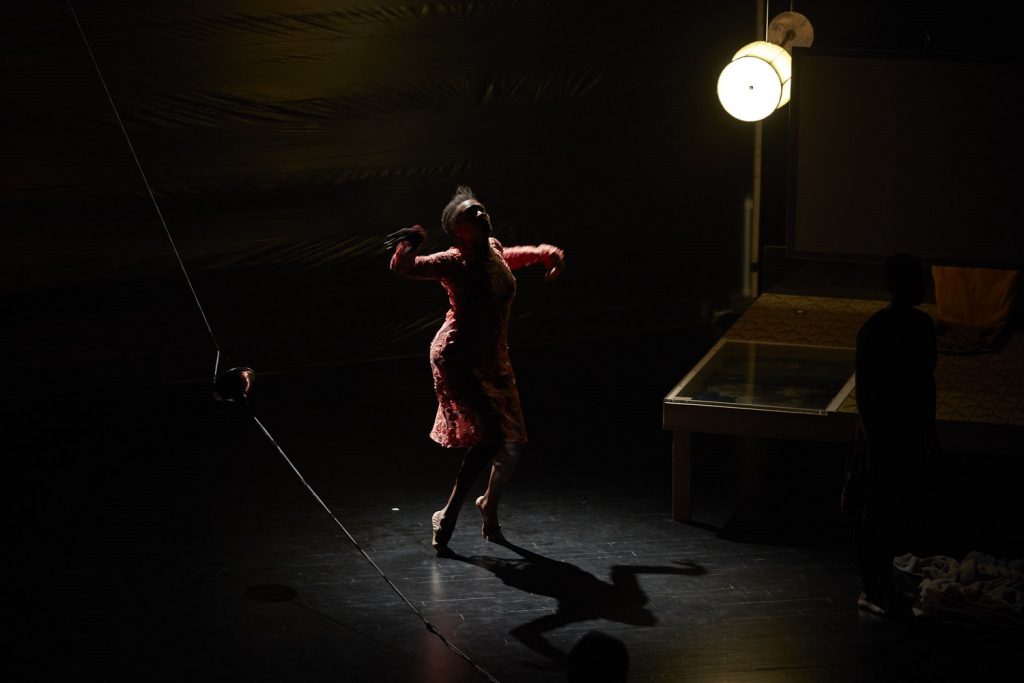
Okwui Okpokwasili: POOR PEOPLE’S TV ROOM – Photo by Gene Pittman, courtesy of the Walker Art Center, Minneapolis
The set includes two white chairs, a flood lamp attached to the middle of a long cord that divides the space into separate domains, and a starkly furnished room that is turned on its side. This sideways room is uniquely brought upright with the aid of a live action video projection. What one sees on the screen is also backwards of what appears beneath it. It is a brilliant mind bender. There is a plastic curtain along the back that divides the up and down stage areas. Characters who move behind it appear as ghostly visions or perhaps haunted memories. There is a wonderful scene in which a group of colorful dots projected on the translucent wall swirl around and slowly amass into a magical creature who cuts through the membrane-like wall.
POOR PEOPLE’S TV ROOM includes dramatic performances by Okpokwasili, Thuli Dumakude, Katrina Reid, and Nehemoyia Young. Thuli Dumakude plays the female elder who helps keep her people’s history alive. She talks with a younger woman, played by Nehemoyia Young, who speaks about her mother, but is never able to clearly identify her. Katrina Reid is stunning in her role as a “house girl” who is caring for Okpokwasili’s character, a woman who is supposedly ageless. The “house girl” nurses the woman from her breast, giving her life. The woman is, however, verbally abusive and constantly reminds the girl of her lowly place in life.
The two different realms in this production sometimes overlap. The ageless woman sees a vision of the elder and appears threatened by her, giving a sense of the present being haunted by the past. Perhaps the two women are one in the same. The movement that Okpokwasili has created drives the emotion as powerfully as the text. Her choreography is not literal, but one feels the intensity of the women’s internal plights.
At first the conversation between Dumakude and Young was difficult to understand from where I was seated as their area was not miked like that of the room on the other side of the stage. Fortunately, this improved as the evening progressed.
Okwui Okpokwasili is a striking woman, with a commanding presence and a strong singing voice that can conjure up painful images even when the words are not clearly heard. The electronic score and the original songs created by Okpokwasili and Born evoke and weave together tribal and modern-day eras.
Fantasy is beautifully woven together with a harsh reality in POOR PEOPLE’S TV ROOM and I highly recommend seeing it. For information and tickets, click here.
To view the L.A. Dance Chronicle Calendar of performances, click here.

